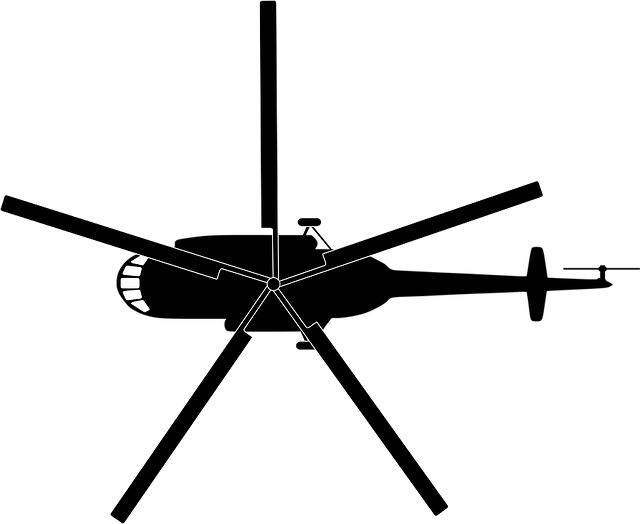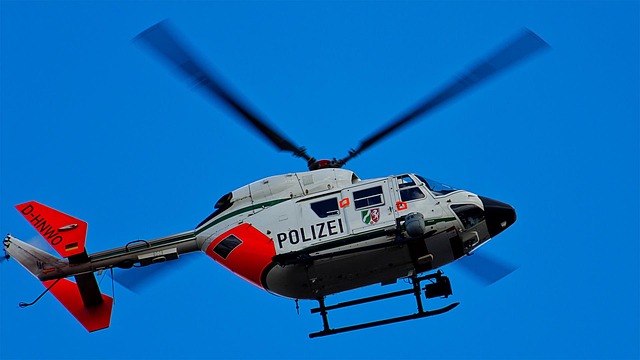Helicopter flight, rooted in early 20th-century experiments by Igor Sikorsky, has evolved into a feasible solution for urban air mobility, driven by advancements in materials science and engineering. Today, we're closer than ever to futuristic cityscapes where helicopter commuting is the norm. Architects are redesigning cities to integrate aerial travel technologies, blurring the lines between ground and sky with structures accommodating landing pads, charging stations, and passenger access points. Electric Vertical Take-Off and Landing (eVTOL) helicopters promise quieter, cleaner transportation, revolutionizing urban planning, emergency services, and leisure activities. Integrating helicopter flights aims to alleviate traffic congestion, pollution, and carbon emissions while enhancing city connectivity and efficiency. Future regulations will guide safe integration, addressing noise, security, and air traffic management with dynamic policies and advanced technologies.
“Imagine soaring through a vibrant cityscape, not just as a passerby but as a participant in its dynamic fabric. Futuristic cityscape flight, driven by innovations in helicopter design and technology, is transforming urban mobility. From historical roots to cutting-edge architectures, this evolution promises efficient, sustainable, and exhilarating transportation.
Discover how evolving helicopter flight shapes the cities of tomorrow, enhancing both functionality and passenger experience.”
- The Evolution of Urban Air Mobility: A Historical Perspective
- Designing for the Sky: Futuristic Architecture Meets Aerial Travel
- Technology Driving Innovation: Unlocking the Potential of Helicopter Flight
- Navigating Urban Challenges: Efficient and Sustainable City Transportation
- Passenger Experience: Elevating Comfort and Safety in the Skies
- Regulatory Frameworks and Future Vision: Shaping the Skyline of Tomorrow
The Evolution of Urban Air Mobility: A Historical Perspective

The concept of urban air mobility has evolved significantly over time, with a clear historical trajectory leading up to today’s cutting-edge technologies. In the early 20th century, helicopter flights marked a pivotal moment in our understanding of vertical travel. Pioneers like Igor Sikorsky demonstrated the potential for powered flight, setting the stage for future developments. These initial experiments laid the groundwork for more advanced aerial vehicles and led to the creation of various prototypes designed for urban transportation.
Over subsequent decades, advancements in engineering and materials science propelled helicopter-based mobility forward. The introduction of lightweight composites and powerful yet efficient engines enabled the design of aircraft capable of carrying passengers in densely populated areas. As cities grew and traffic congestion became a pressing issue, the idea of using helicopters for urban commuting gained traction. This historical perspective highlights how far we’ve come in realizing the vision of futuristic cityscapes with seamless helicopter flight as an integral part of daily life.
Designing for the Sky: Futuristic Architecture Meets Aerial Travel

In designing cities for the future, architects are increasingly looking up—literally. With the integration of advanced aerial travel technologies, such as helicopter flights, into urban landscapes, new challenges and opportunities emerge. This requires a reimagining of vertical spaces and skyward architecture to ensure seamless interaction with airborne vehicles. Structures must not only withstand the elements but also accommodate landing pads, charging stations, and passenger access points for helicopters, blurring the lines between ground-level infrastructure and aerial gateways.
The concept of vertical cities, already gaining traction due to their space-efficient design, takes on new significance in a future dominated by helicopter flights. Skyscrapers could double as air traffic hubs, with helipads strategically placed on rooftops or incorporated into building facets. This symbiotic relationship between architecture and aerial travel promises to transform urban mobility, offering residents and visitors alike faster, more efficient ways to navigate the cityscape from above.
Technology Driving Innovation: Unlocking the Potential of Helicopter Flight

In the realm of futuristic cityscapes, helicopter flight is not just a concept but an integral part of urban mobility. Advanced technology is unlocking new possibilities and redefining the way we navigate through the skies. Electric vertical take-off and landing (eVTOL) helicopters, for instance, promise quieter, cleaner, and more efficient flights, transforming urban transportation into a sustainable and dynamic experience. These innovative aircraft are equipped with cutting-edge avionics, advanced propulsion systems, and smart integration with existing infrastructure, making helicopter flight safer and more accessible than ever before.
The potential of helicopter flight in futuristic cityscapes extends beyond mere transportation. It offers new perspectives for urban planning, emergency response, and even leisure activities. With the ability to hover and maneuver in tight spaces, helicopters can provide direct access to remote locations and hard-to-reach areas within a bustling metropolis. This technology is poised to revolutionize how we live, work, and play, creating a vibrant tapestry of aerial mobility that complements the ground infrastructure already shaping our urban landscapes.
Navigating Urban Challenges: Efficient and Sustainable City Transportation

Navigating urban challenges is a key aspect of designing efficient and sustainable city transportation, especially with visions of futuristic cityscapes involving helicopter flights. Traditional traffic congestion and pollution can be alleviated through innovative transport systems that integrate aerial mobility. Helicopter flights offer a promising solution for swift and direct movement across dense urban landscapes, potentially reducing travel times and carbon emissions. By incorporating vertical take-off and landing capabilities, cities can create seamless connectivity between different neighborhoods and attractions, fostering more compact and efficient urban development.
Sustainable practices play a crucial role in shaping the future of city transportation. Electric helicopters, for instance, could contribute to lowering noise pollution and reducing the carbon footprint associated with urban mobility. Smart traffic management systems that coordinate both ground and aerial vehicles can optimize flow and enhance safety. This holistic approach ensures that futuristic cityscapes are not only visually stunning but also functional, livable, and environmentally conscious.
Passenger Experience: Elevating Comfort and Safety in the Skies

In the realm of futuristic cityscape flights, the passenger experience takes center stage, with a strong focus on elevating comfort and safety standards in the skies. Imagine soaring above towering skyscrapers and gleaming structures in a sleek helicopter, where every aspect of your journey is designed to captivate and reassure. The interior cabin, spacious yet intimate, offers premium seating that adjusts for optimal legroom and reclines into comfortable sleeping positions for long-haul flights. Advanced noise cancellation technology ensures a serene environment, allowing passengers to enjoy immersive entertainment systems with crystal-clear audio and visuals.
Safety remains paramount in this futuristic scenario. Cutting-edge avionics and collision avoidance systems are integrated seamlessly into the helicopter’s design, providing real-time data on air traffic and potential hazards. Autonomous flight modes promise precision landings and takeoffs, even in challenging weather conditions. Additionally, advanced material science plays a crucial role in protecting passengers from external elements, ensuring a smooth and secure journey through the urban labyrinthine.
Regulatory Frameworks and Future Vision: Shaping the Skyline of Tomorrow

Regulatory frameworks play a pivotal role in shaping the future of urban air mobility, particularly as cities embrace helicopter flights for passenger transport. As this innovative concept takes off, governing bodies worldwide are tasked with establishing comprehensive regulations to ensure safety, security, and environmental sustainability. These frameworks will define flight paths, noise restrictions, air traffic management systems, and integration into existing city infrastructure. By setting clear guidelines, cities can welcome helicopter flights while maintaining a harmonious balance between urban development and quality of life.
The future vision for regulatory bodies is to create dynamic, adaptable policies that support the growth of urban aerial transportation while addressing potential challenges. This includes streamlining approval processes for helicopter services, promoting technological advancements in silent flight technology, and implementing smart traffic management systems. By fostering a collaborative environment between regulators, industry innovators, and city planners, tomorrow’s skyline can be shaped with safe, efficient, and sustainable helicopter flight networks, revolutionizing urban mobility as we know it.
The integration of helicopter flight into urban landscapes promises a revolutionary future for city transportation. By leveraging advanced technologies, architects, and urban planners can design sleek, futuristic cityscapes that incorporate aerial mobility seamlessly. As regulatory frameworks evolve to accommodate this trend, we’re poised to see efficient, sustainable, and comfortable urban travel. The potential of helicopter flights to alleviate traffic congestion and provide innovative passenger experiences is undeniable, marking an exciting era ahead for both urban development and air travel.
